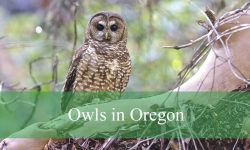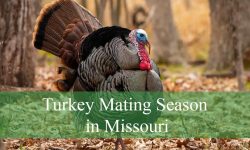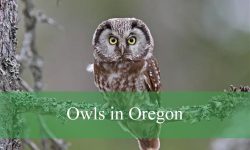When most people think of coyotes, they imagine vast prairies, remote deserts, or open forests. But few realize that one of the largest and most successful urban coyote populations in the United States thrives right in the heart of Chicago. These clever and adaptable animals have made a surprising home among skyscrapers, expressways, and city parks, living closer to people than most residents ever suspect.
In recent years, sightings of coyotes trotting across streets at night or darting through alleys have become increasingly common. While they may appear out of place, Chicago’s coyotes are not accidental visitors. They have deliberately adapted to city life, mastering the urban landscape in ways that even scientists are still trying to understand.
From their secretive social lives to their surprising role in controlling pests, the urban coyotes of Chicago have many hidden sides. Let’s uncover the most astonishing facts about these resilient animals and see how they’ve managed to coexist so successfully in the middle of a major metropolis.
The Rise of Urban Coyotes in Chicago
How Coyotes First Reached the City
Coyotes were once confined to open grasslands and rural regions. However, habitat loss and human expansion gradually pushed them eastward and northward. By the 1990s, coyotes had firmly established themselves in Cook County and surrounding areas. What began as a few scattered individuals quickly grew into one of the most stable urban coyote populations in North America.
Today, researchers estimate that there are between 2,000 and 4,000 coyotes living in the greater Chicago metropolitan area. They roam everywhere—from forest preserves to downtown streets. Some have even been spotted near the Magnificent Mile, proving that city lights and noise do not deter them.
Why Coyotes Thrive in Chicago
Chicago provides everything a coyote needs to survive: food, shelter, and space. The abundance of rodents, rabbits, and discarded food creates a reliable food supply. Parks, cemeteries, and rail corridors serve as safe travel routes and denning sites. With fewer natural predators and limited human interference, coyotes have learned that city life can actually be safer than living in the wild.
This adaptability allows coyotes to thrive in neighborhoods where many native animals struggle. Instead of being displaced by urbanization, coyotes have become one of its most successful beneficiaries.
Surprising Adaptations of Urban Coyotes
Masters of Stealth and Survival
Coyotes in Chicago are not the reckless scavengers people sometimes imagine. They are secretive, cautious, and largely nocturnal. Most residents never realize that a coyote may pass within a few blocks of their home every night. Studies using GPS collars have revealed that urban coyotes can navigate complex environments with remarkable precision, even avoiding intersections and traffic-heavy areas.
Their intelligence is key to survival. Coyotes quickly learn patterns of human activity, using timing and cover to remain unseen. They are known to cross roads during quieter hours and use railroad tracks as pathways through dense city zones.
Family Bonds and Social Structure
Contrary to the idea that coyotes live alone, many form tight-knit family groups. A typical coyote pack includes a breeding pair and their offspring from previous years. These family members cooperate to defend territory and raise pups. In urban areas, maintaining a strong social structure helps them manage limited resources and minimize conflict.
Coyotes are monogamous, and pairs often stay together for life. Their loyalty to family and territory is one of the reasons why they remain stable and successful in Chicago’s competitive environment.
What Urban Coyotes Eat
A Varied Diet Beyond Trash
While it’s easy to assume coyotes rely on garbage, studies show that most of their diet still comes from natural sources. Rodents make up the bulk of their food, followed by rabbits, birds, insects, and fruits. By consuming large numbers of rats and mice, coyotes actually play a crucial role in controlling pest populations across the city.
Researchers examining scat samples from Chicago coyotes found that less than 2% of their diet consists of human-related food waste. This finding challenges the stereotype of the city scavenger. Instead, coyotes act more like stealthy urban predators, quietly maintaining ecological balance in places where few other carnivores exist.
Seasonal Diet Changes
In spring and summer, coyotes take advantage of small mammals and fledgling birds. During fall, they switch to fruits such as crabapples and berries, which are plentiful in parks and backyards. Winter pushes them to rely more on rodents and carrion. This flexible diet helps them stay healthy year-round, even when certain food sources decline.
Where Coyotes Hide in the City
Unexpected Den Sites
Coyotes are masters of concealment. They build dens in places that most people overlook—abandoned lots, wooded areas, and drainage culverts. Some even take shelter beneath decks or in thickets along golf courses. Because they prefer quiet, low-traffic zones, their dens often go unnoticed for years.
Researchers have discovered dens surprisingly close to human homes, sometimes within 200 feet. Yet coyotes rarely cause disturbance unless provoked. Their secretive habits make them one of the least detected large mammals living in urban environments.
Navigating the City Safely
To move through Chicago, coyotes use green corridors such as rivers, railway lines, and park trails. These routes allow them to avoid direct contact with humans. Their sense of timing is remarkable—they often travel at night or early dawn, minimizing the chance of being seen. GPS data shows that some individuals cover more than 10 miles in a single night while avoiding major roads and intersections.
Myths and Misconceptions About Chicago Coyotes
Myth 1: Coyotes Are Dangerous to People
Despite frequent sightings, attacks on humans are extremely rare. Urban coyotes tend to avoid confrontation and prefer to keep their distance. When conflicts occur, they are often linked to feeding or attempts to protect pups. Experts emphasize that feeding coyotes is the main cause of aggressive behavior because it breaks their natural fear of humans.
In reality, coyotes are shy animals. They pose far less risk to people than stray dogs or raccoons carrying disease. Most problems can be avoided simply by not feeding wildlife and keeping pets supervised.
Myth 2: Coyotes Only Come Out at Night
While they are primarily nocturnal, urban coyotes can also be active during the day, especially during winter or the breeding season. Seeing a coyote in daylight doesn’t mean it’s sick or dangerous—it may just be searching for food or moving between resting spots.
Myth 3: The City Encourages Their Growth
Some believe that Chicago authorities intentionally allow coyote populations to grow unchecked. In truth, the city works closely with wildlife researchers to monitor populations and educate the public. The Chicago Coyote Project, led by scientists from the Urban Coyote Research Program, has been studying these animals for over two decades to better understand their role in the urban ecosystem.
The Role of Coyotes in Chicago’s Ecosystem
Natural Pest Control
Coyotes serve as the city’s unofficial pest control team. By consuming large numbers of rodents, rabbits, and even Canada goose eggs, they help keep populations of these animals in check. Their presence has reduced the need for toxic rodenticides, which can harm other wildlife and pets.
Without coyotes, Chicago might experience an increase in disease-carrying rats and overpopulated rabbits. Their balanced predation benefits both humans and the broader environment.
Scavengers That Keep the City Clean
Coyotes also act as scavengers, removing carrion and organic waste from the urban landscape. By consuming dead animals, they prevent the spread of disease and reduce unpleasant odors in parks and alleys. This natural cleaning service goes largely unnoticed but contributes to the overall health of the city’s ecosystem.
How Scientists Track Chicago Coyotes
The Urban Coyote Research Program
Founded in 2000, the Urban Coyote Research Program is one of the longest-running wildlife studies in the country. Using GPS collars, researchers track the movements, diet, and social behaviors of coyotes across the Chicago metropolitan area. The project has revealed groundbreaking insights into how these animals navigate urban life.
Some tracked coyotes have lived up to 13 years—far longer than most wild coyotes. Their survival rates in the city are higher due to fewer natural predators and a stable food supply.
Surprising Findings
Researchers discovered that coyotes in Chicago often patrol defined territories that they defend from outsiders. Some have learned to cross major roads using overpasses and quiet intervals in traffic. Others use storm drains to move unseen between neighborhoods. These findings demonstrate just how adaptable and intelligent urban coyotes can be.
Human and Coyote Coexistence
How to Avoid Conflicts
The key to peaceful coexistence lies in understanding and respecting coyote behavior. Residents are encouraged to:
- Never feed coyotes or leave pet food outdoors.
- Keep pets on a leash and supervise them, especially at night.
- Secure garbage cans and compost bins.
- Use hazing techniques like loud noises or waving arms to scare away bold coyotes.
Following these steps helps maintain coyotes’ natural fear of humans, reducing the likelihood of encounters.
When Coyotes Help Humans
In many neighborhoods, coyotes indirectly benefit residents by keeping rodent populations low. Their hunting activity contributes to cleaner streets and healthier green spaces. Some homeowners report fewer problems with rats after local coyotes establish territories nearby.
Coyotes have become an essential part of the city’s ecological balance. Their presence may seem intimidating, but they are quietly performing valuable environmental work every night.
What Happens During Coyote Mating Season
Mating Behavior and Family Life
Coyote mating season typically occurs between January and March. During this time, pairs become more visible and vocal, using yips and howls to communicate across territories. After a gestation period of about two months, females give birth to litters of four to seven pups in secluded dens.
Both parents participate in raising the pups, with older siblings sometimes helping. Families remain together until late fall when young coyotes disperse to find their own territories. These movements sometimes lead to more sightings as juveniles explore new areas.
How the City Adapts During This Period
Chicago’s wildlife officials often receive more reports of coyote activity during mating and pup-rearing season. Education campaigns remind residents to secure pets and avoid disturbing known den sites. By giving coyotes space during this period, conflicts remain minimal and coexistence continues smoothly.
Interesting Facts About Chicago Coyotes
Fun Discoveries from Research
- Coyotes Use Traffic Lights: Studies have recorded coyotes waiting at crosswalks before crossing roads, seemingly understanding light patterns.
- Some Coyotes Live in Downtown: A few individuals inhabit the city core, surviving entirely unnoticed amid constant human activity.
- They Rarely Bark: Instead of barking, coyotes communicate with howls, yips, and whines to maintain pack coordination.
- They Help Songbirds: By reducing feral cat numbers indirectly, coyotes allow songbird populations to rebound in some areas.
- They Remember Hazing: Once scared off by humans, coyotes often avoid the same spot for weeks or months afterward.
These fascinating traits highlight just how adaptable and intelligent these creatures are.
The Future of Coyotes in Chicago
Long-Term Population Trends
Current research indicates that Chicago’s coyote population has stabilized. Natural territorial limits prevent overpopulation, and mortality from vehicles keeps numbers in check. Scientists believe coyotes will continue to thrive as long as green spaces and food resources remain available.
As urbanization expands, coyotes may even become more integrated into city life. Other cities such as Los Angeles and New York are already witnessing similar patterns. Chicago serves as a model for understanding how large predators can coexist with humans in metropolitan settings.
A Coexistence Model for the Nation
Chicago’s experience provides valuable lessons for other urban centers facing growing wildlife populations. Education, monitoring, and responsible behavior have allowed residents and coyotes to share space with relatively few conflicts. As climate change and urban sprawl reshape wildlife habitats, such coexistence strategies will become increasingly important across North America.
FAQs About Urban Coyotes in Chicago
Are Chicago Coyotes Dangerous to Humans?
No, coyote attacks on people are extremely rare. Most coyotes prefer to avoid direct contact and will flee when confronted. Problems usually arise only when they are fed intentionally or accidentally.
What Should I Do If I See a Coyote?
Remain calm and keep your distance. Make loud noises, wave your arms, or throw small objects near (not at) the coyote to reinforce its natural fear. Never attempt to feed or approach it.
Do Coyotes Hunt Pets?
Small pets like cats and unsupervised dogs can be at risk, especially at night. Keeping pets indoors or leashed is the best precaution.
How Long Do Urban Coyotes Live?
Urban coyotes in Chicago can live up to 10–13 years, much longer than rural coyotes, whose lifespan averages about 6 years.
Who Studies the Coyotes in Chicago?
The Urban Coyote Research Program, in partnership with Cook County and various universities, conducts ongoing studies using GPS tracking and field observation to understand coyote ecology in the city.
Conclusion
The story of Chicago’s urban coyotes is one of resilience, intelligence, and balance. Far from being invaders, they have become a natural part of the city’s ecosystem, quietly helping control pests and maintain ecological harmony. Their ability to adapt to a world dominated by humans demonstrates just how resourceful wildlife can be.
While their presence may seem surprising, coyotes remind us that nature is never truly absent—even in the heart of one of America’s largest cities. By learning to coexist responsibly, Chicagoans can continue to share their streets and parks with these remarkable creatures for generations to come.






